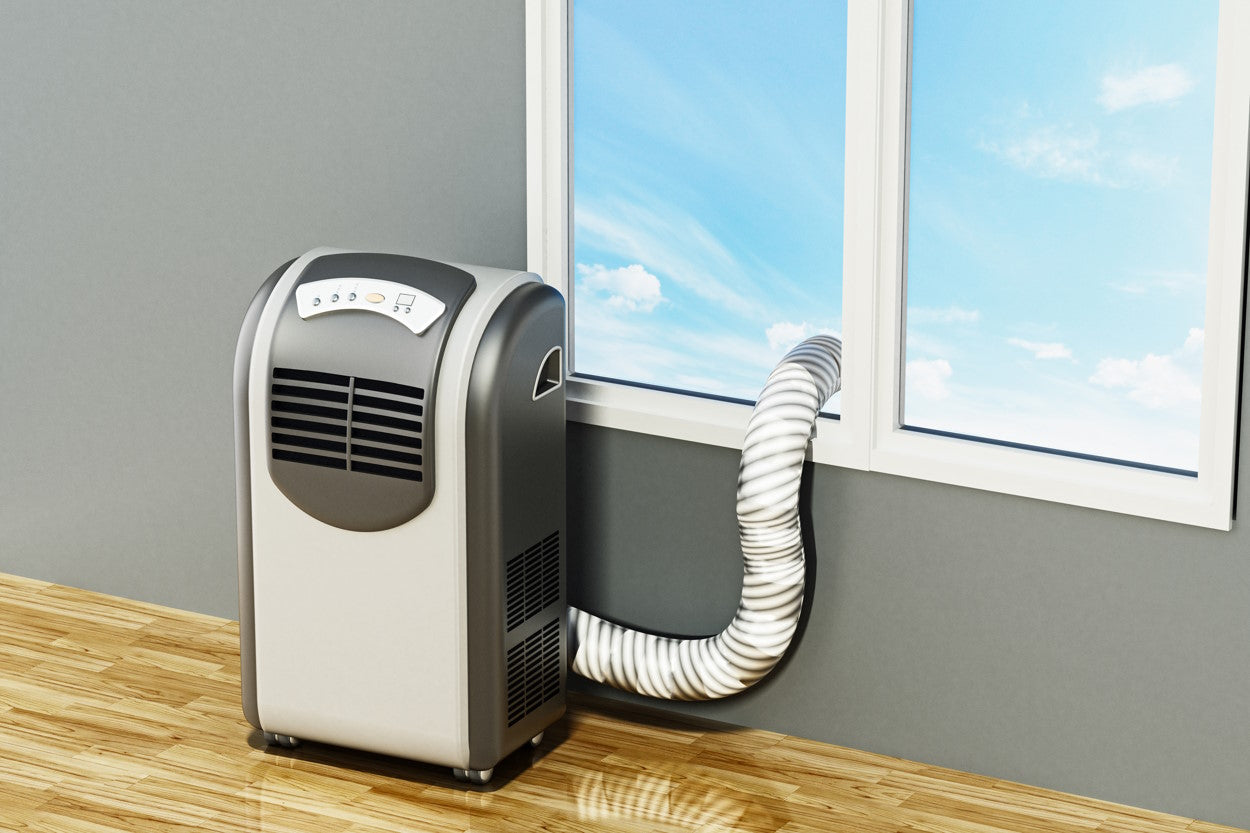When your indoor temperatures start to rival the outdoor summer heat, it’s time to bring in some cooling reinforcements. Portable air conditioners can be an efficient, budget-friendly way to cool off a single room—they’re easier to install than window units and cheaper than most HVAC upgrades. When choosing a portable AC for your home, you’ll see two main options: single-hose and dual-hose.
What is a dual-hose portable air conditioner?
A dual-hose portable air conditioner uses two exhaust hoses. One pulls in outdoor air, and the other vents hot air outside. Dual-hose units can cool a room quickly and efficiently, and they’re a great option for larger spaces and rooms with tall ceilings.
Advantages:
- Faster, more efficient cooling than single-hose units
- Filters last longer because the unit brings in fresh air from outdoors
- Use less energy to cool a larger room
Disadvantages:
- May be less efficient if outdoor air is hot or humid (With some models, you may even need to remove the air intake hose on especially humid days.)
- Higher upfront cost
- More difficult to set up and move from room to room

How does a dual-hose portable AC work?
All air conditioners have two sides, the cooling side and the exhaust heat side, and both are fans that blow air over metal coils full of refrigerant. Air from inside the house is cooled down on the cooling side with a cold coil called an evaporator coil. It is called an evaporator because the refrigerant inside becomes a gas after it helps to cool the room. In a slight misnomer, water condenses on the evaporator because cold air can hold less water than warm air, so when the room air is cooled it leaves water behind.
The heat gets outside by cooling the coil on the exhaust heat side with outdoor air. A fan pulls outside air into the unit, which is blown over the condenser to cool off (and condense back into a liquid) the refrigerant so it can be returned to the evaporator. The exhaust heat side, outside of the room, blows out air hotter than the outside temperature.
This cooling process creates both exhaust heat and liquid water. It is a sealed system where outside air and inside air don't mix, but is only blown over coils containing refrigerant. The "dual hose" term really only refers to the exhaust heat side, as we'll describe below.
What is a single-hose portable air conditioner?
A single-hose portable air conditioner only has one exhaust hose, which vents the heat from the condenser outdoors. This simple design makes single-hose units less efficient than their dual-hose counterparts, so they’re best suited for smaller rooms.
Advantages:
- Lower upfront cost
- Easier to move and store
- May use less energy than a dual-hose unit when placed in a small room
Disadvantages:
- Not as effective in larger rooms
- Less efficient overall, which can lead to higher energy costs and an increased risk of mechanical breakdown
- Filters need more frequent replacement, since a single-hose unit draws in more unfiltered air with dust, allergens, and other indoor pollutants
How does a single-hose portable AC work?
The cooling side of a single-hose portable air conditioner works on the same principle as the dual hose with a cold coil. However the exhaust heat side is in the room instead of outside, and is cooled with indoor air, not outdoor air.
As a single-hose AC draws in air from the room and pushes it outdoors, it can create a slight vacuum. When this happens, warm air from outside the room is sucked in through cracks around doorways and windows to replace the missing air, and the AC unit has to work even harder to cool the room.

Are dual-hose portable air conditioners better?
Though dual-hose portable air conditioners win out when it comes to speed and efficiency of cooling, they may not be the best option for every situation. In the rare cases that an air conditioner is used because of a heat source inside the room, a single-hose might be useful because outside air that is pulled in will be cooler and won't spoil efficiency.
The air conditioner you choose will ultimately depend on your budget, room size, local climate, and personal preference, and when paired with an air purifier, can improve your home's overall air quality & comfortability.
No matter which option you go with, you can use these two criteria to compare different models:
BTU: British thermal unit (BTU) ratings tell you what size room the air conditioner can cool. Generally, an AC unit needs 20 BTU per square foot of living space.
EER: A unit’s energy efficiency ratio (EER) compares its cooling capacity (in BTU/hour) with its energy use (in watts). To minimize the electricity cost of your AC, you want the EER to be as high as possible.
Single-hose and dual-hose portable air conditioners can both provide much-needed relief on hot summer days. Compared to more permanent AC upgrades, any portable air conditioner can be a relatively hassle-free, affordable way to cool your living space.







